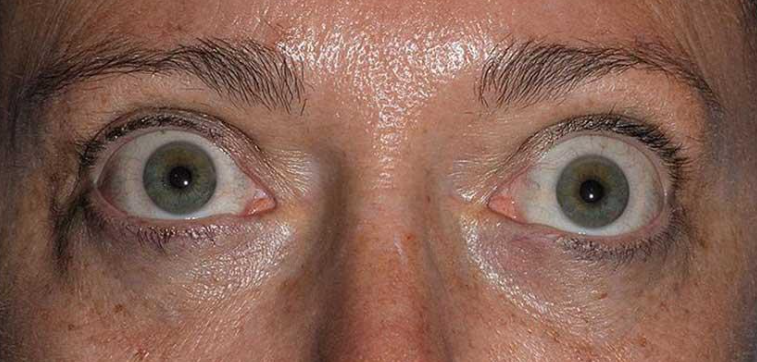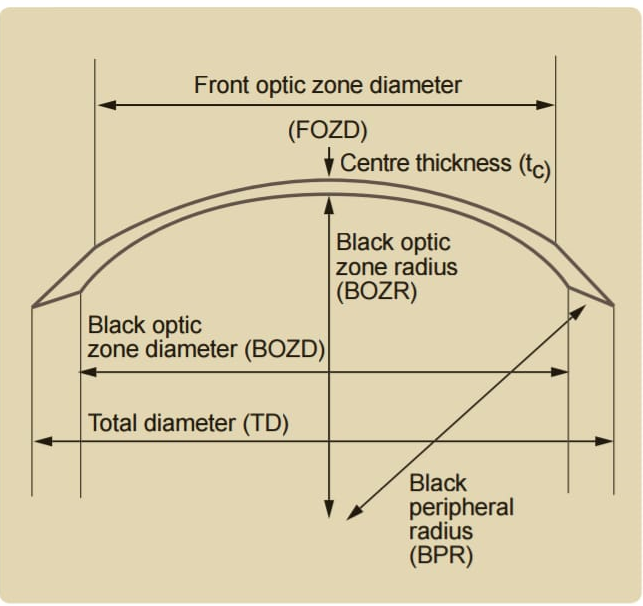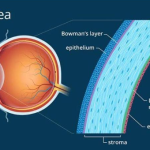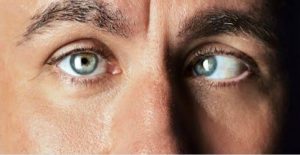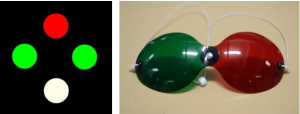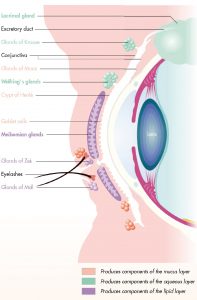Thyroid eye disease is an immune system disorder. It goes by a few other names. The immune system doesn’t function right in people with this condition. That leads to inflammation that causes the muscles and tissue around your eyes to puff up.
Thyroid eye disease can cause lots of symptoms. Some are mild while others are more serious. Often, your eyes will feel dry and “gritty.” You might get swelling that pushes your eyes forward or affects how you see. It’s rare, but you could lose your eyesight, too.
There are two phases of TED: the active or inflammatory phase and the stable phase. The active phase can last for months up to three years, while the stable phase follows when the inflammation stops.
TED is often related to Graves disease, which is also an autoimmune disease. It can affect the thyroid, eyes and skin.
Graves disease can cause hyperthyroidism, which means that your body releases too many thyroid hormones. Less commonly, Graves disease can also cause hypothyroidism, which means that your body doesn’t release enough hormones. Both can result in thyroid eye disease, but people with low levels of thyroid hormone who do have eye swelling and eyebrow hair loss tend to have severe cases of hypothyroidism.
However, thyroid eye disease can happen in people with normal levels of thyroid hormones. Thyroid conditions can also cause secondary glaucoma because of the damage to the optic nerve.
Causes of TED:
Our immune system protects us from germs and other things that can make us sick. With thyroid eye disease, our body mistakes our own tissue in and around our eyes for a foreign invader. Our immune system then sends out cells called antibodies that attack the fat, muscle, and other tissue in and around our eye.
Signs of TED:
The signs and symptoms of thyroid eye disease include:
- Dry eyes.
- Irritated eyes due to a gritty feeling.
- Watery eyes.
- Red eyes.
- Bulging eyes, also called proptosis.
- Double vision, also called diplopia.
- Difficulty closing your eyes completely. This can lead to an ulcer (sore) on your . cornea.
- Pain behind your eyes and pain with eye movements.
Diagnosis:
A healthcare provider will be able to diagnose thyroid eye disease by doing a physical eye exam. They will be able to examine both our eyelids and our eyes.
If our healthcare provider thinks that we have thyroid eye disease, they’ll order blood tests to check if our thyroid hormone levels and antibodies are too high or too low.
Other tests our provider may request include:
- Ultrasound of the eyes.
- Computed tomography (CT).
- Magnetic resonance imaging.
Treatment of TED:
- Ophthalmologist may prescribe anti-inflammatory drugs like prednisone and other systemic steroids and/or rituximab.
- TED can be treated by changing the lifestyle. The most important lifestyle change you can make is to quit smoking if you smoke. It raises your risk of developing TED by seven to eight times and makes TED’s active (inflammatory) disease phase longer. In addition, smoking decreases the effectiveness of treatment for thyroid eye disease. Other things you can do to be more comfortable include:
- Using cool compresses on your eyes.
- Wearing sunglasses.
- Keeping your head higher than your body when you lie down.
- Taking selenium supplements (after approval from your provider). Studies indicate that these may help people with mild active thyroid eye disease.
- Taping your eyelids shut when you sleep. Being unable to close your eyes can lead to dryness and a corneal ulcer, which can cause scars on your eyes and loss of vision.
- Wearing glasses with prisms to reduce double vision.
- Using a patch on one eye to reduce double vision.
- Keep your thyroid hormones level by following your health care provider’s suggestions and getting regular thyroid tests.
